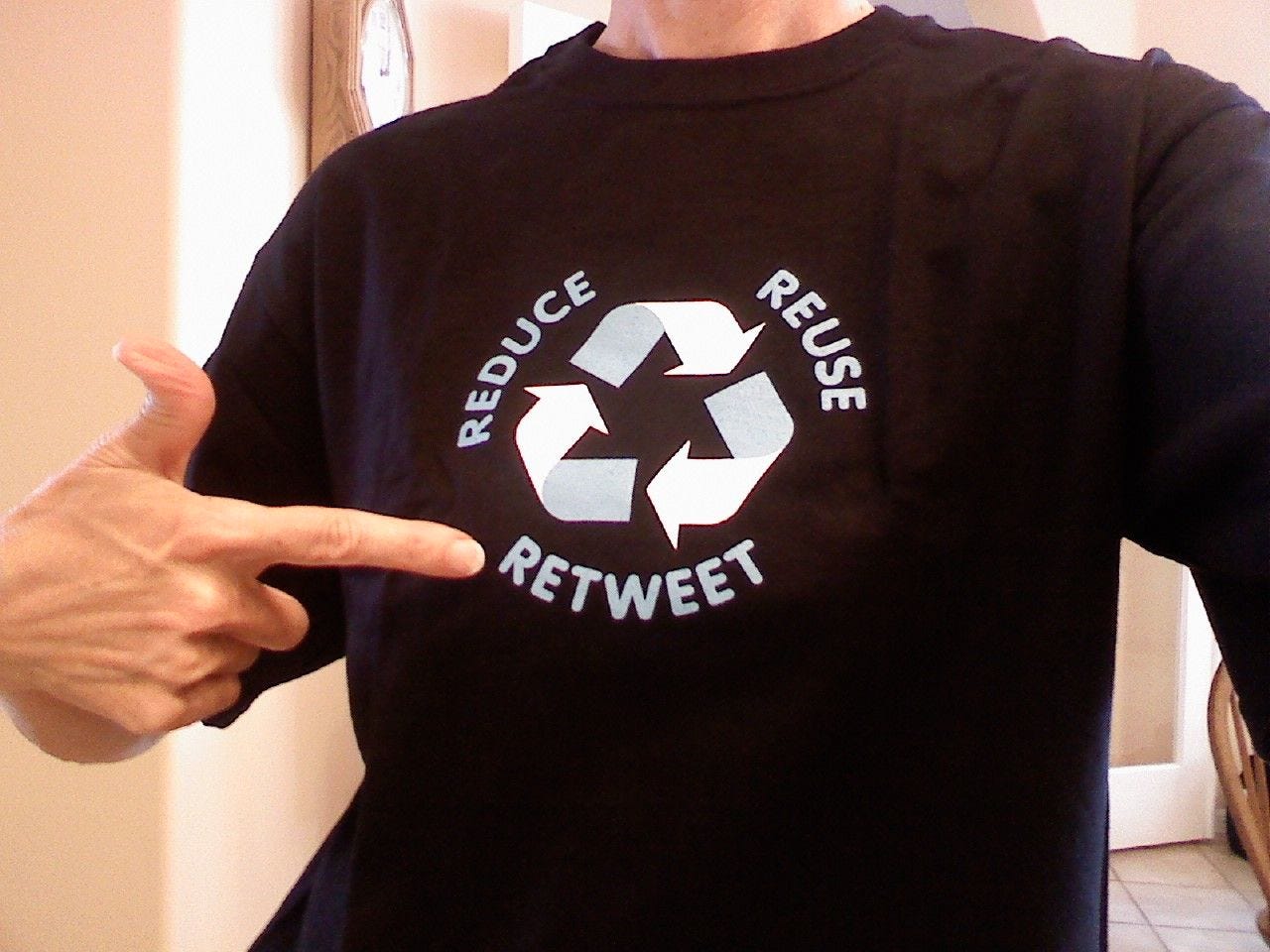04: Sticking to what you know

I’ve recently just had a bit of a holiday (well, time off work) for the first time since Christmas. To say it was overdue is probably a slight exaggeration. It also gave me a bit of time to actually think about what I’m doing, what my offer is, and how I preserve what’s left of my sanity.
I started working for myself in March 2020. I’d decided to do it over the Christmas break, but I’d been building up to it for years really. Two weeks into my new freelance life, after I’d spent months getting work lined up for my new venture, we went into lockdown. At least 95% of the work I was expecting to do disappeared overnight. That’s a fun story for another day.
My plan when starting out was to have a five-pronged offer:
- Strategy
- Training
- Websites
- Copywriting
- Social media
I’ve got a reasonable level of experience in all five areas, and I envisaged myself as some sort of Swiss Army marketer who was useful in any situation. I’d forgotten one of the main rules of marketing.
Stick to what you’re good at.
I’m always advising businesses to establish themselves before branching out. Walk before you run. Make a name before you over-stretch yourself. I thought I knew better than my own advice.
Thankfully work picked up after month two and I’ve never looked back, but I found myself being spread too thinly. I like jumping between different projects and tasks - I find I get bored otherwise - but this was just too much. In one day I could be:
- Setting up a Facebook ad campaign
- Creating social media posts
- Making progress on an ecommerce website
- Writing a 1000 word blog post
- Delivering a training session on SEO
I was helped a bit by the pandemic, oddly. I didn’t have to worry about having a social life, and we were in the house all the time so I might as well be working. My wife’s school was only open to the children of key workers, and my son didn’t need to go to school before we were both here. So I worked. I got into an unhealthy habit of working to 10pm or 11pm each night, before getting up at 7am and starting all over again.
And it was too varied. It meant that whenever I would have an introductory meeting with someone I struggled to properly pin down how I could help. Instead it was “what do you want me to help with?” and I’d try to go from there. I didn’t have anything concrete to introduce myself with. I wasn’t a trainer, I wasn’t a web developer, I wasn’t a copywriter…
If you try to be something to everyone, you’ll wind up being good at nothing. After a year or so I got my offer down to three things:
- Strategy
- Training
- Websites
These are the three things I really enjoy, and where the bulk of my work was coming from. I made a difficult decision to drop copywriting and social media clients, and focus on building a name in those areas. Over time I found other work creeping in, so during May’s time off I made that ‘reset’ decision again and dropped the bulk of my work that wasn’t around those three areas.
This means I also have my “content pillars” for marketing in future.
Content pillars
Taking a definition from Sendible, content pillars are:
A set of themes or topics that your brand can use to create posts.
This involves knowing your business, understanding your audience, and sticking to your lane. You don’t deviate, regardless of how tempting it is. And on social media there’s a lot of temptation (more on that soon).
The trick is choosing pillars that make sense to your business. What are you an expert in? And what might people expect to see from your accounts? You don’t need to jump into every conversation, get involved in every meme, or hijack every trending topic. Stick to the ones that mean something to you.
I do a lot of work with apprenticeship providers. I’m not involved in most of the content production, but you’d expect to see posts about:
- The benefits of apprenticeships, and education in general
- Tips to help you learn or study
- Prospective career paths and success stories from past apprentices
You can still be interesting and engaging - that’s more down to your tone of voice - but there are things that people want and expect from you.
If you know what type of content you’re going to be producing, it’s actually easier to find it. You don’t have to go through thousands of ideas to narrow them down, because you’ve got your pillars. The trick is not to have too many, as this dilutes your overall message.
Like I mentioned in my introduction, when I had too many things I was trying to be known for I wound up being known for none. By narrowing it down I’m able to focus on and become an expert in my chosen areas. It also means I feel comfortable passing on work, whereas when I started I felt like I should be trying to win anything even vaguely marketing related.
Pillars in action
I’ve been running The Online Rule’s website and Twitter account for nearly nine years now. I’ve grown it purely organically to just over 3,000 followers. That’s not an incredible number - some others which haven’t been around as long and in a similar space have a lot more - but it’s a solid audience that engages with a lot of the things I post.
In this space it would have been easy to grow it by sharing social media mistakes, or just sharing some of the creative things football clubs do accompanied by short comments (like a lot of meme accounts). Instead my approach is to make everything a learning experience. I try to answer things like:
- What’s the marketing lesson here?
- What can other clubs learn from this approach?
- What makes this good?
With this account, I’ve accepted that it’s niche. My ideal follower is someone who works in sports marketing, so it’s not necessarily a broad field. I try to make sure that I’ve something interesting or useful to say about everything that gets shared.
This week, I published a long thread and an article about how the 92 English clubs use Twitter. The reaction to various parts of this thread, such as one actual football club retweeting a chart they were featured in, is what proves to me it’s what my audience likes to see.

For no apparent reason, I’m now a Northampton Town fan.
Club staff have shared it themselves too, which reinforces this idea.
If you stick to some standard pillars people know what to expect from you. The first time they visit your profile they’ll see posts about consistent topics, which helps them decide whether or not they want to follow you. If they decide not to, then your content isn’t for them and that’s absolutely fine.
Why you don’t want to trend
One of the reasons social media marketers in particular deviate from their pillars is the emphasis some companies place on “going viral” (urgh) or hitting big vanity figures (think likes, follower counts etc). These have very little impact on your business, and are short-term at best.
If something is trending on Twitter, or capturing the public attention, then your brand needs to carefully weigh up whether getting involved is a good idea.
Those short-term gains in attention don’t last, and it’s much more beneficial to a brand account to be known for consistently sharing useful posts about their business or industry. That’s sustainable, and will lead to more impact in the long-term.
Building a community is much more useful than jumping on a trend.
What I’m reading

It’s from Twitter themselves, so it’s always going to be pro-social, but it’s nice to see my own approaches being backed up by the channels.

A slightly in-depth piece about how Facebook likes don’t lead to people buying
This backs up my points around viral success. Posting something outside of one of your pillars that gets you thousands of likes isn’t going to lead anywhere. It can make you feel good - I’ve gone viral! - but ultimately that’s not what influences consumer behaviour.

This is one thing that I always teach in my social media sessions that a lot of people new to running an account don’t understand.
On average, only around 5% of your followers see the things you share organically. While that’s also a great advert for investing in paid social, it also means you can share the same thing three or four times over a few months without alienating or annoying your audience. Who knows, you might even get a different response.
Thank you for reading Inform, Educate, Entertain. This post is public so feel free to share it with your networks.




